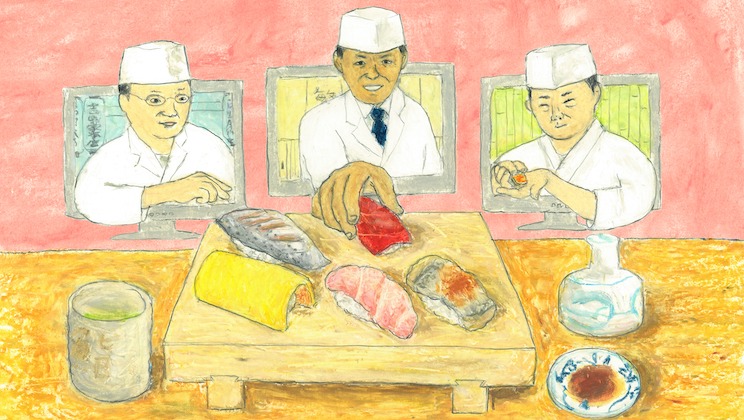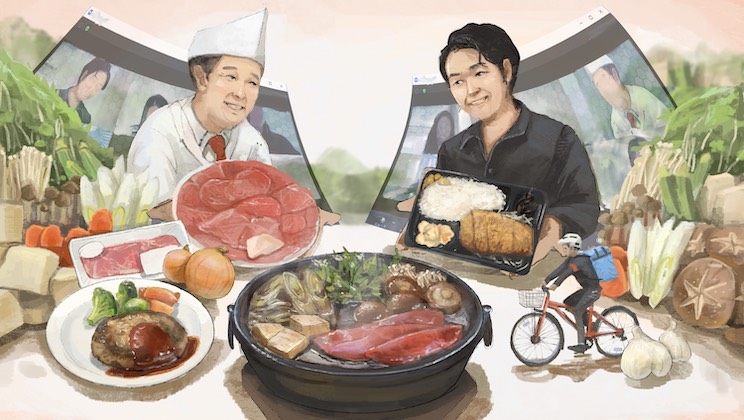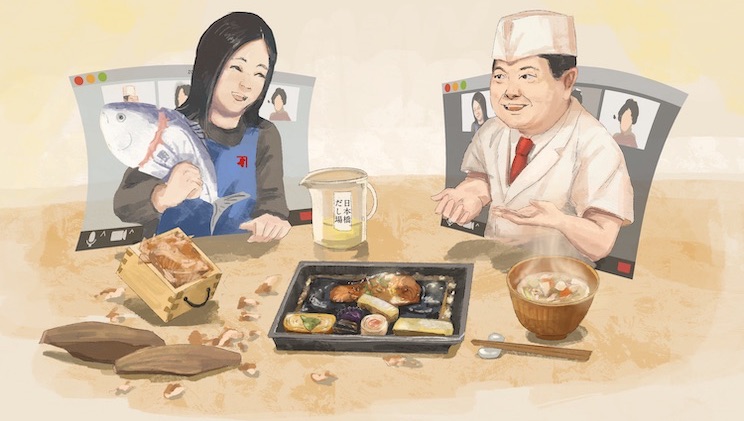A Bit of Luxury in Your Day. Enjoy Some Delicious, Nutritious Unagi Eel. -Special Feature: Nihonbashi Dining at Home #1
A Bit of Luxury in Your Day. Enjoy Some Delicious, Nutritious Unagi Eel. -Special Feature: Nihonbashi Dining at Home #1
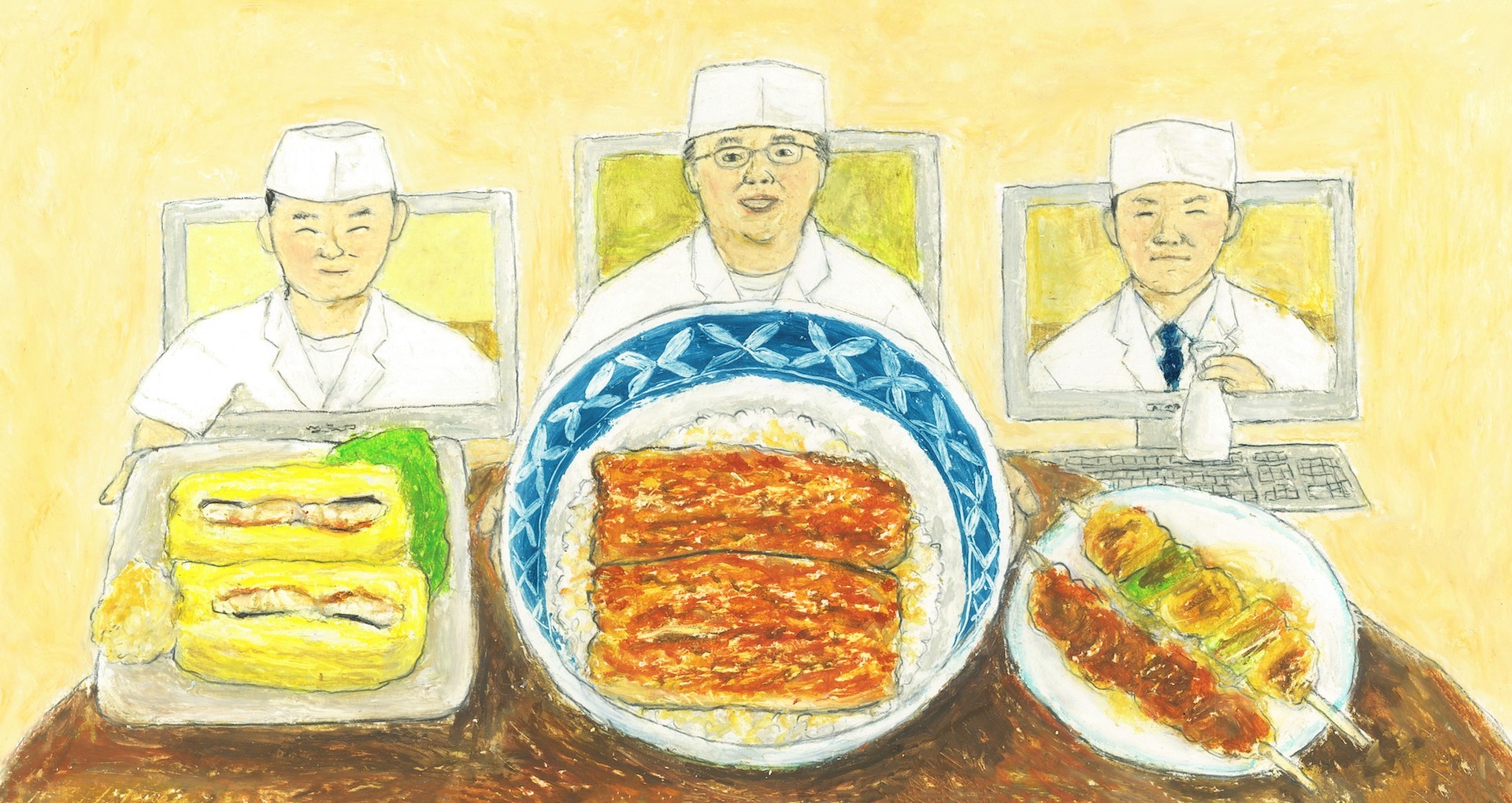
We are all spending more time at home these days. In Nihonbashi, the gourmet city, popular restaurants of all varieties are launching new menus for takeout, delivery, direct sales, and more, out of a desire to provide health through food during a difficult time. We are posting a variety of information on the “Nihonbashi Dining at Home” site in note, and Bridgine is also launching a tie-in special feature on the best ways to enjoy Nihonbashi dining during these times, using interviews with restaurant owners. Our theme for this first installment is “unagi” (eel). In it, we spoke with the owner-operators of three established unagi restaurants about the strengths of their businesses and “delicious ways to serve unagi” at home. We invited FM radio personality and familiar face to Nihonbashi establishments Ms. Shiho Shingu to serve as facilitator, and are proud to present the appetite-friendly cross-talk that followed in this issue.[Establishments Interviewed]Oedo Unagi Kappo: 10th Generation Chef Mr. Hiroyuki WakuiIzumoya Nihonbashi: 3rd Generation Chef Mr. Takahiro IwamotoTakashimaya: 5th Generation Chef Mr. Akira Oshio[Facilitator]Freelance Announcer: Ms. Shiho Shingu
Q. Could you introduce your restaurants for us, please?
Mr. Hiroyuki Wakui (Wakui): “Oedo” was founded about 220 years ago. We’ve had our establishment here in Nihonbashi since the second World War, and I’m the 10th chef from my family line to run it. We have tables on the first floor and Japanese-style floor seating on the second, and serve everything from casual lunches to banquets.
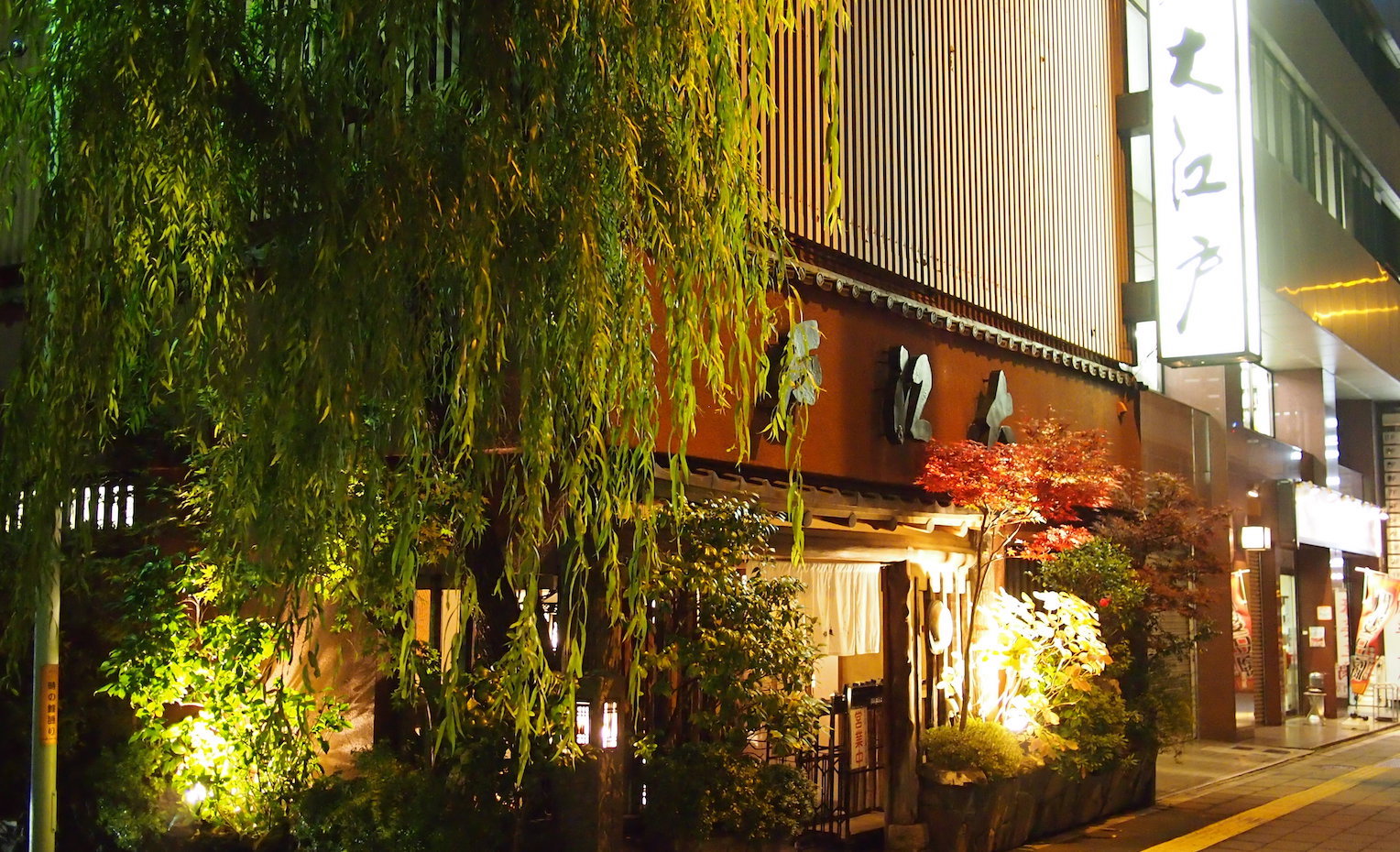
The exterior of Oedo (Image provided by: Oedo)
Mr. Takahiro Iwamoto (Iwamoto): It’s good to meet everyone. I’m Iwamoto, the third-generation chef of “Izumoya.” The restaurant was founded in 1946 in Hongokucho, Nihonbashi, and we have that main restaurant, a branch, and our Mitsukoshi, Nihonbashi establishment. In addition to group reservations, we also serve people who work nearby, as well as a lot of long-running regulars… We have a wide range of clientele.
Mr. Akira Oshio (Oshio): I’m Oshio, from “Takashimaya.” The business was founded in 1875, and is in its 145th year this year, with me as the fifth chef. Just like the others, we serve a variety of clientele, and also do delivery and takeout and so forth. We’ve been established in Nihonbashi for quite some time.
Q. Please introduce each other, now, and share what you like on the menus of other restaurants.
Shingu: You’re all quite closely connected, with routine contact. I’d love to know what you’d recommend off each other’s menus.
<Delicious items at Oedo>
Oshio: I’d like to recommend the “Shirayaki” unagi at Oedo. Unagi used to be served mostly cut in half before the Edo era (1603-1868), but the major distinction at Oedo is that they serve a flavorful, smaller whole unagi. Their dishware is also exceptional, and they use a double-decker setup with a hot water dish called a doko under the serving dish to keep everything hot as you eat. With the sudachi citrus and wasabi sides, it’s amazing when eaten with Japanese sake.
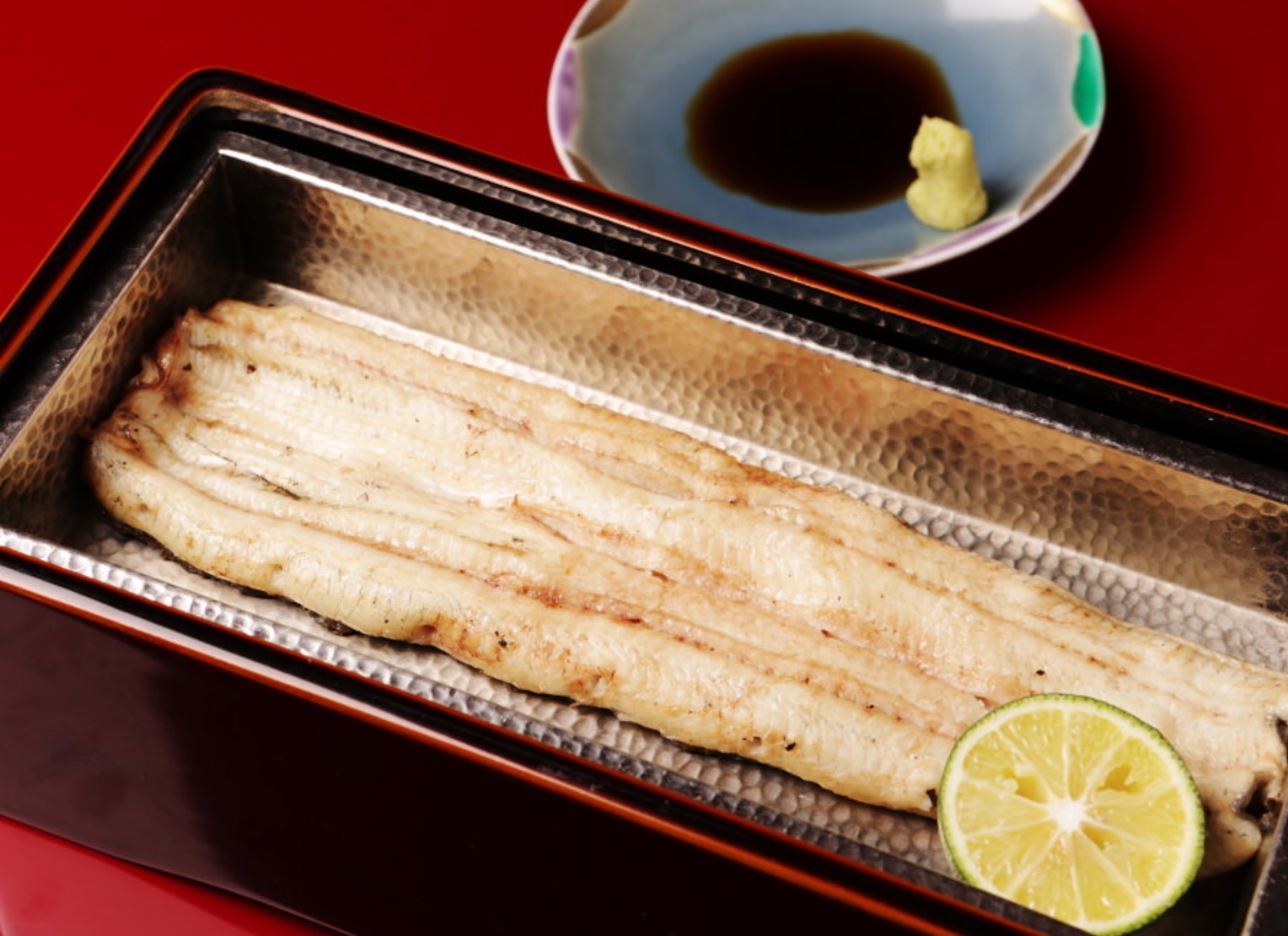
Oedo’s shirayaki, served piping hot with specialty dishes. (Image provided by: Oedo)
Iwamoto: I wanted to recommend the shirayaki, too. It’s very luxurious, dining on a quality whole unagi in those dishes. I really want those doko for my place, too…
Wakui: Thank you very much. As for why we use smaller unagi in our shirayaki, that’s because they’re well-marbled with fat, which draws out the umami savory flavor of the unagi itself. You can really taste the flavors of the ingredients in shirayaki, so they’re important. Our dishes are specially-ordered items from Wajima. They’re a bit pricey, Iwa-chan (nickname for Mr. Iwamoto of Izumoya). (Laughter)
Iwamoto: Of course they are… I’m too scared to ask how much. (Laughter)
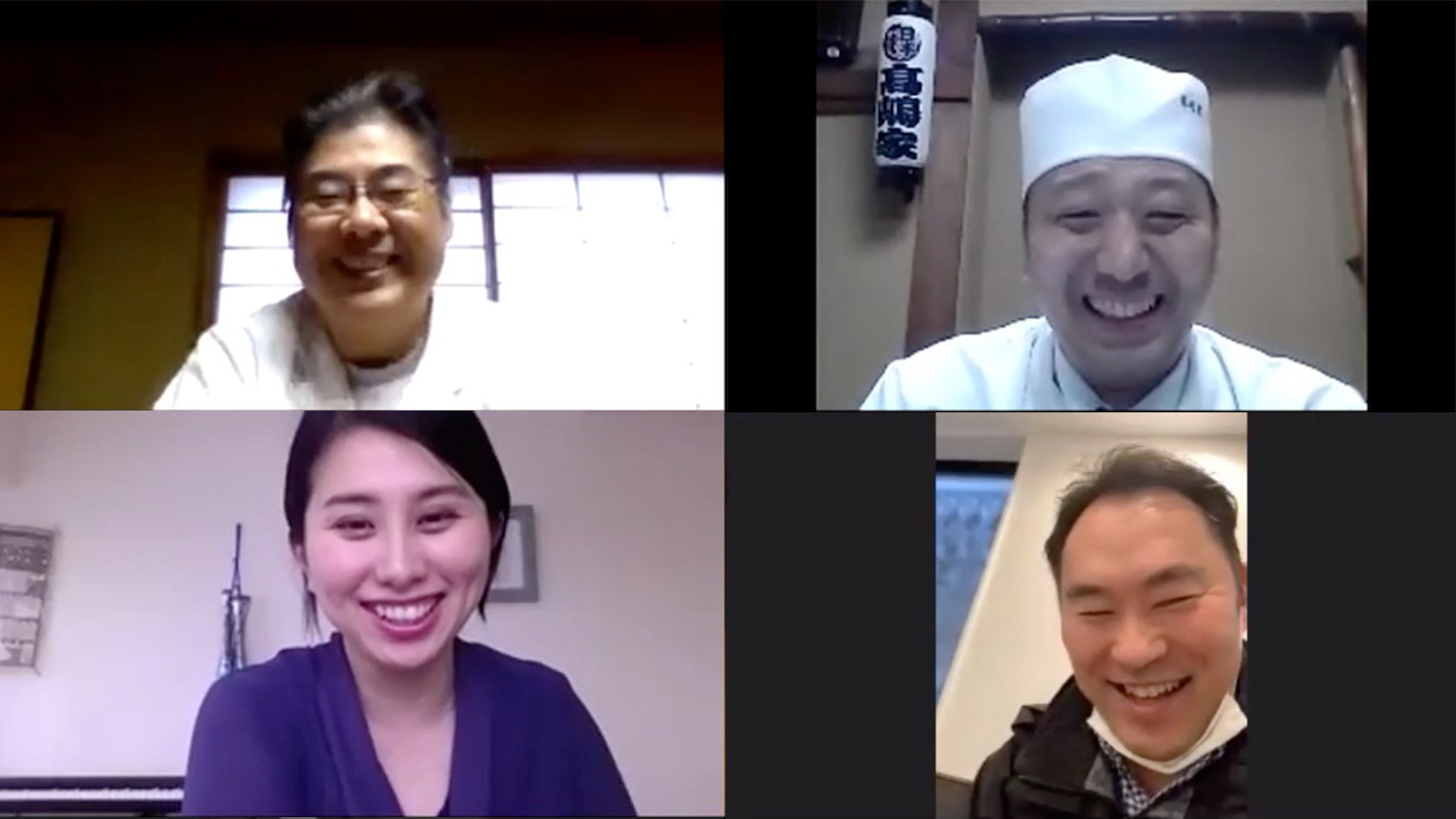
All of the amiable chefs in a smile-filled online interview. (Image: Bridgine editorial department)
<Delicious Items at Izumoya>
Oshio: My top pick of Izumoya’s is the “unagi with fish sauce.” It’s an amazing dish, with concentrated umami flavor from the unagi. I had them make a special dish with it in the past, and a bowl of food with that fish sauce is really an amazing flavor.

The exterior of Izumoya (Image provided by: Izumoya)
Iwamoto: Akira (nickname for Mr. Oshio of Takashimaya), we don’t usually serve just bowls with fish sauce, don’t say too much about them (laughter). Oh, but I’ll explain about them, since they came up. Our fish sauce is a seasoning made with just fish and salt, of a type made all over the world. The famous version is soy sauce made with Japanese sardines, or in other words nam-pla Thai fish sauce. We use it with unagi at the restaurant, and serve an original menu item called “Izumo-yaki” where we brush it onto a steamed unagi then fry it. The fish sauce has a strong umami flavor, and is typically used in hot pot simmered dishes. As a seasoning, it’s a great item that brings out a lot of depth of flavor in dishes.

The “Izumo-yaki” at Izumoya. A dish named after the restaurant, and only available there (Image provided by: Izumoya)
Wakui: The great point about Izumoya is that in addition to traditional unagi dishes, they also served a variety, like the “gama-no-ho-yaki” that preceded current kabayaki soy sauce seasoned unagi, and “ki-shoyu-yaki” with uncured soy sauce, and so on. I love that, and their yakitori chicken skewers. You can sense the attention to quality in their side dishes. Their dish of unagi skin and ponzu sauce is delicious, too.
Iwamoto: Mr. Wakui, we don’t normally serve the skin with ponzu, either… (Laughter) We have a dish of blanched fugu blowfish skin with ponzu, chives, and grated daikon radish and carrots, though. It’s good with unagi skin, too. It’s also good if you skin the unagi, chop up the remaining meat with the skin, bread it, and then fry it with a lot of oil.
Shingu: Having heard all of this, I want to try ordering off-menu at Izumoya (laughter).
Iwamoto: We serve some things as special orders for colleagues, since they make you want to look into new ways of eating things… But we can’t always do it, so let’s keep that between us, please! (Laughter)
<Delicious Items at Takashimaya>
Wakui: All else aside, Takashimaya has high standards for sake. They take the trouble of visiting the brewery, and work on it so hard they’re even involved in planting. I think that their focus on sake is a special feature of the restaurant.

The Takashimaya restaurant exterior (Image provided by: Takashimaya)
Oshio: Thank you very much. Actually, Oedo and Mr. Wakui were the ones who created an opportunity for use to focus on sake. I learned a lot from them. I think that atsukan hot sake is the best pairing with unagi, and we serve ours at fairly high temperatures. The umami flavors blend for an amazing taste when you drink it after it cools down a bit, alongside a bite of unagi. The temperature of the sake is high enough that the unagi fats won’t coagulate, and lets you eat it in its best state. By all means, try pairing it with hot sake when you cook unagi at home.
Iwamoto: I love the yakitori chicken skewers at Takashimaya. They have a variety of yakitori types, so you can have an amazing time with yakitori sides and sake to drink as you wait on your unagi. They also handle the “kyosui unagi” they make in the city of Yaizu in Shizuoka Prefecture. Kyosui unagi is a brand of unagi raised in an environment close to the natural one, where they replicate the changes of the four seasons. They have very firm flesh and strong umami flavor, making them another menu item everyone should try.
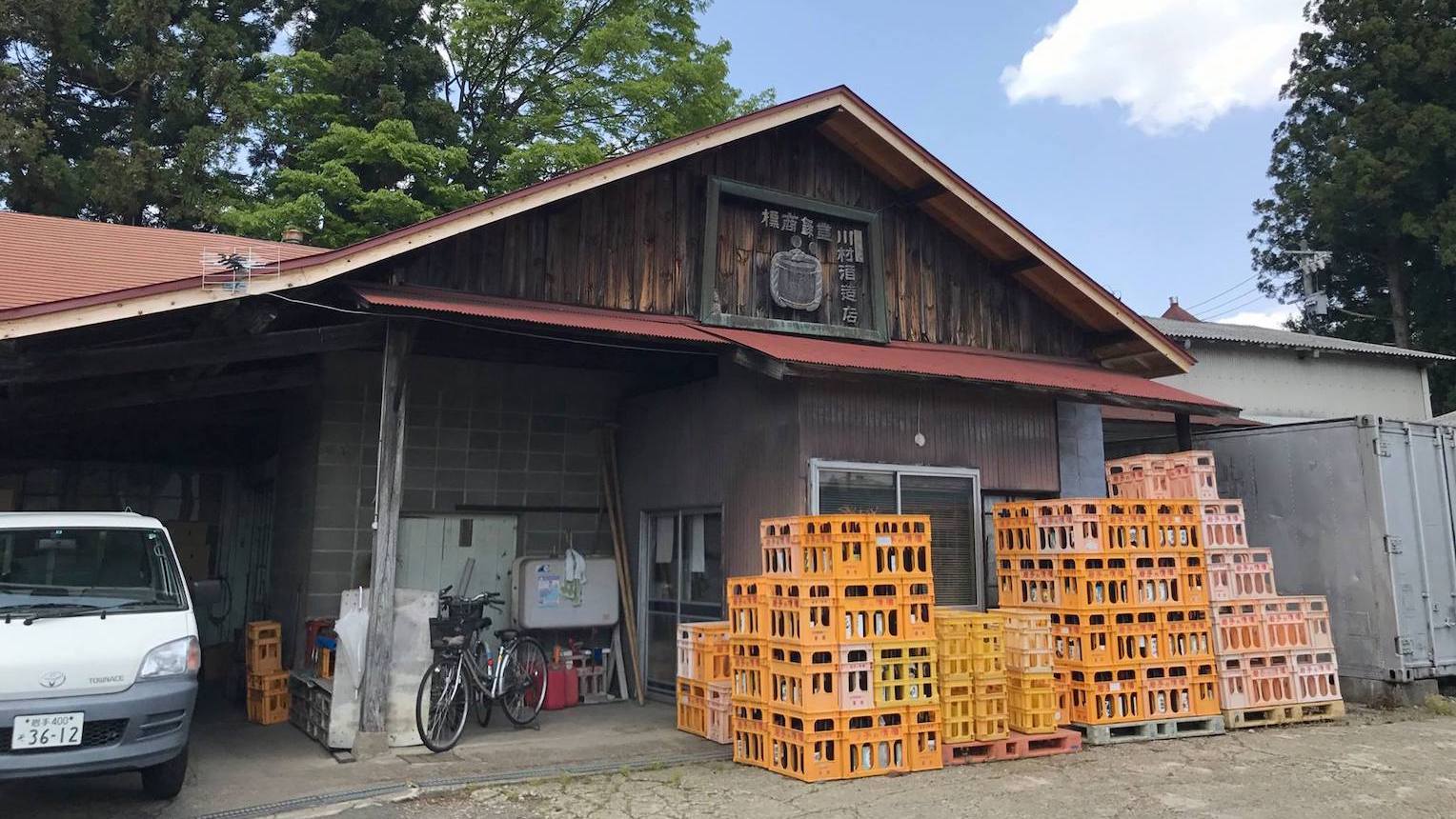
Visiting a brewery in Iwate to stock sake that pairs well with unagi (Image provided by: Takashimaya)
Q. Can you tell us about the differences in flavor between the unagi served at each other’s restaurants?
Iwamoto: I eat at Oedo at least once each season. All else aside, it’s so good… They use traditional soy sauce in their tare sauce; it’s perfectly balanced to go with the meal, and never sour. Their menu is filled with countless unagi with plenty of volume, and the flavor is addictive, so you’d be amazed how you never get sick of it, even if you eat a lot.
Wakui: The volume comes from the “ikada” (raft) served only on Saturdays. The dish has two whole unagi, not cut in half, and it’s the item Oedo is known for.

The popular “ikada” dish served on Saturdays at Oedo. Each dish has so much volume it overflows from its box (Image provided by: Oedo)
Wakui: Izumoya may serve the lightest flavors from among our three restaurants. The charcoal aroma when you take the lid off a dish and the unagi aroma that you sense tickling your nose are both bonuses when you eat unagi. But I think you get a particularly sharp sense of the aroma of the ingredients themselves with unagi from Izumoya. The lighter flavor means they can’t cover anything with tare sauce, so I feel like they’re tightly focused on the ingredients.
Iwamoto: The tare sauce they use at Takashimaya has been handed down and refreshed since they were founded in the 1800s, and it’s an unbelievably deep, satisfying flavor. Unagi flavor varies by season and region, but they use a sauce that brings out only the best parts of the unagi even as the ingredients shift, so it’s reliably delicious every time.
Shingu: Do you think someone who hadn’t really eaten unagi before would recognize these differences?
Wakui: I do think they’d recognize them. But I don’t think you need to make it a hard choice, at first. Because everyone finds food to be delicious based on their own senses, and the biggest point is to enjoy your time at the restaurant. I’d be happy if everyone just starts by going somewhere and experiencing it, including the restaurant’s atmosphere.
Q. You all sell unagi online, too. Please share tricks and recipe arrangements for delicious unagi at home, if you have any.
*Please see end of article for how to order.
Shingu: Under the current circumstances, all of your establishments are selling “vacuum-packed unagi.” Please tell us more about that, too.
Wakui: Each of our restaurants cook items after receiving orders, then vacuum pack them to deliver them with the restaurant flavor intact. But I think they can be made even better with some effort. For example, the way you reheat them. Reheating in hot water is the best way to enjoy vacuum-packed unagi at home.But it takes time and effort, so of course it’s also fine to poke holes in the pack and microwave them, too.
There’s also room for ingenuity in plating, too. After reheating, place the unagi directly on top of rice rather than on a plate. That eliminates any leftovers or missed portions of the delicious unagi flavor.
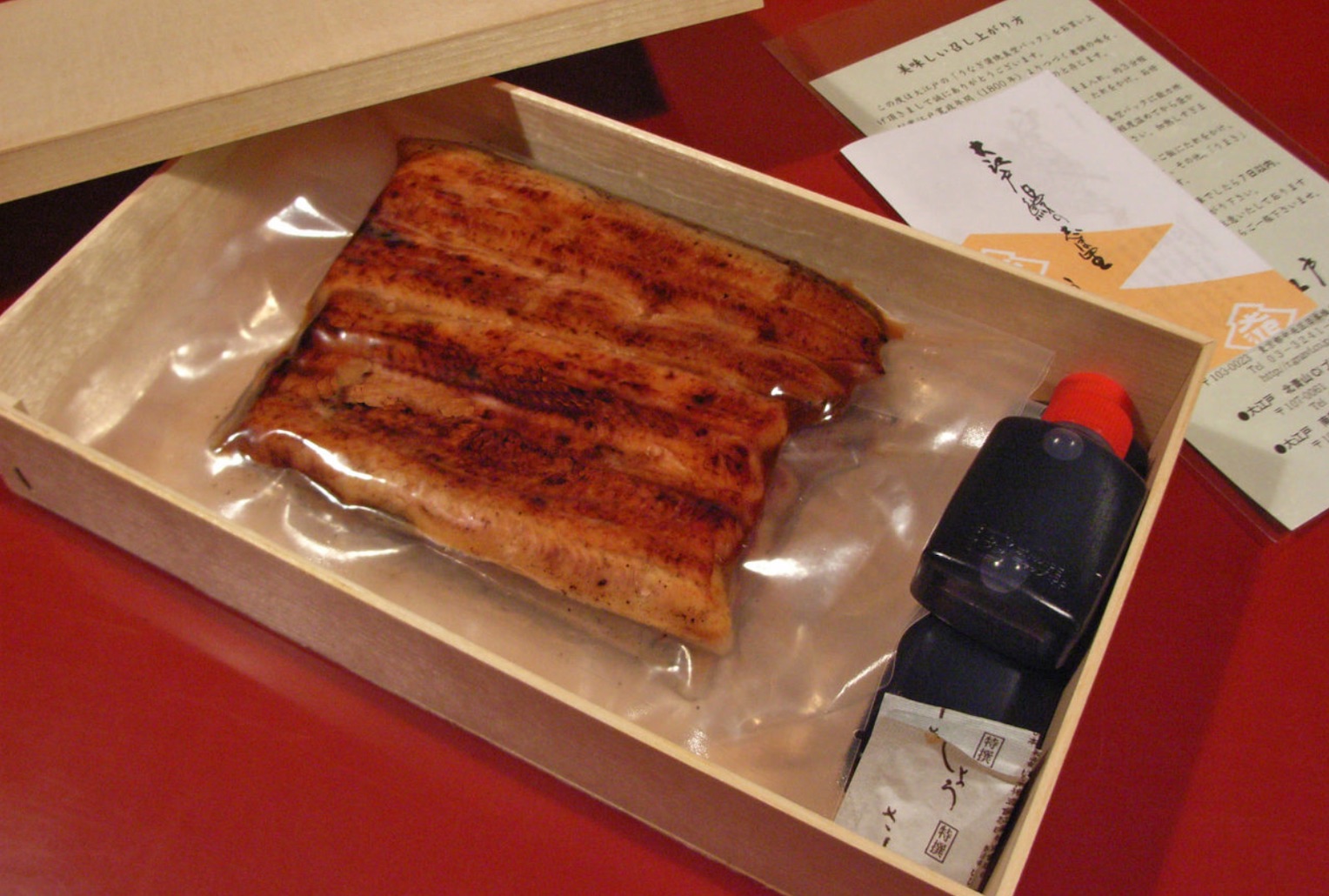
A vacuum-packed unagi dish (Image provided by: Oedo)
Oshio: It’s also good to mix a bit of the tare sauce that comes with it into some rice to make tare rice to serve the unagi on. Then if you pour over the remaining tare, you get a well-balanced una-don bowl dish. The best ratio is 7:3 rice to unagi.
Iwamoto: An “umaki” unagi rolled in an omelet is an arrangement I’d recommend for home. If it’s too hard to wrap the unagi in egg, you can also cut it up finely and mix it with the egg. “Unagi fried rice” is also surprisingly good. The tare sauce and umami flavor from the unagi will spread through the whole dish, so you just need to sprinkle on some salt for seasoning. It’s amazing if you add some coarse-ground black pepper to finish.
Shingu: Unagi fried rice! I’d love to try that… It sounds so good… Now, we’ve asked about the specialties of each restaurant, so I’d love to try ordering and trying them one by one to compare.

Umaki, a highly-recommended combination (Image provided by: Takashimaya)
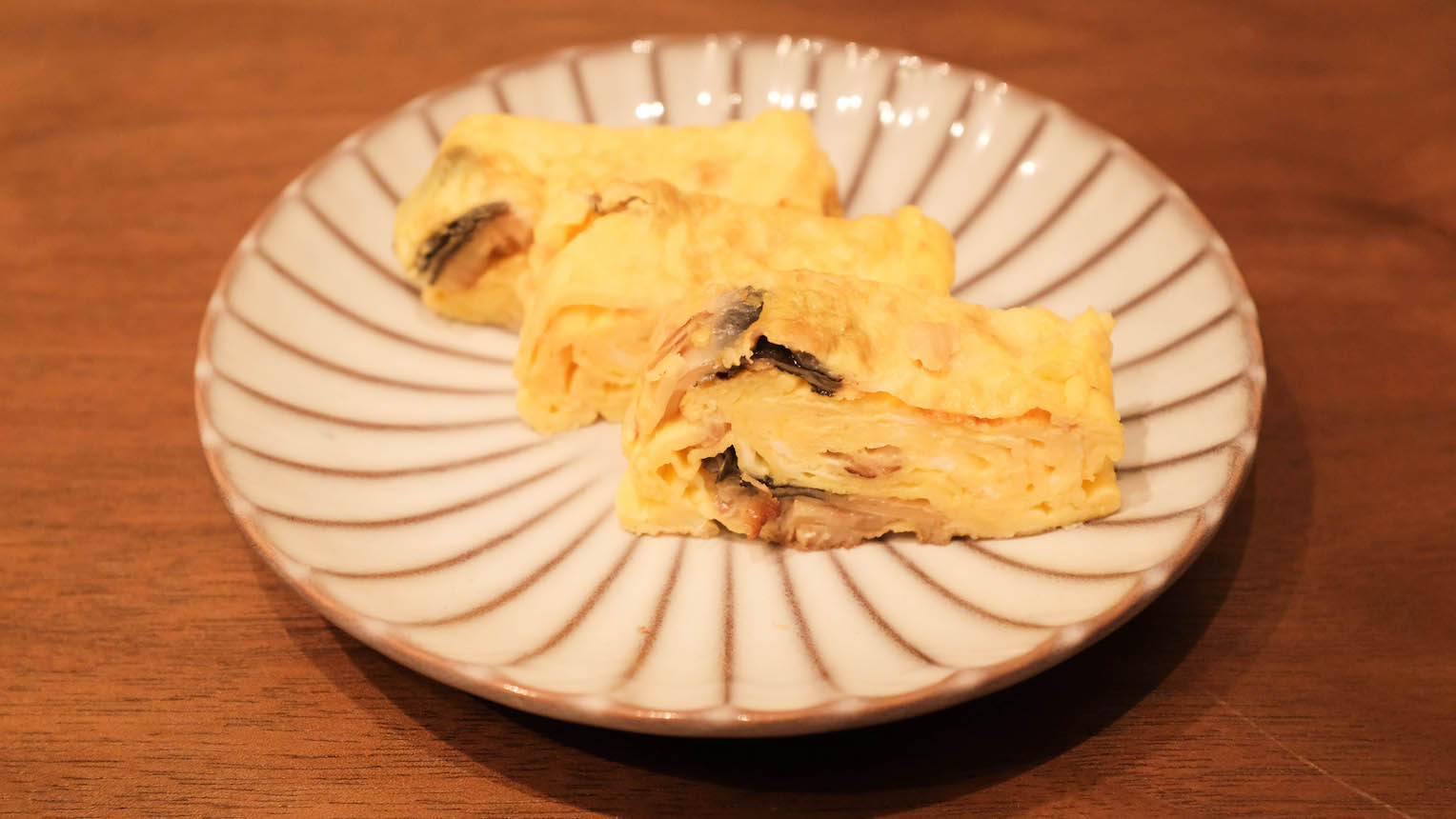
The editorial department tried making an umaki, too. It was delicious and quite simple (Image: Bridgine editorial department)
Q. Finally, everyone, please share a brief message for readers.
Oshio: Precisely at times like this, when the world seems dark, be sure to eat some unagi to keep your stamina and energy up! We have vacuum-packed unagi for you to enjoy a meal at home, so we’d love to hear from you.
Iwamoto: I always say this, but unagi is “the world’s strongest antibiotic, and completely free of side effects!” It’s delicious and will give you strength, making it the perfect ingredient for the current situation.
Wakui: Exactly, unagi is a truly perfect food. Nothing else is as rich in vitamins, and it’s perfect for the era, when everyone wants a stronger immune system. As chefs, we consider it our duty to society to serve delicious food at any time, so we’d love to help out via unagi if we can at all. We’ll keep praying for society to recover as quickly as possible, and hope to see everyone in Nihonbashi as soon as we can go outside freely again!
Interview and text: Minako Ushida (Konel) Illustration:Mame Ikeda
Information on the Restaurants
Oedo Unagi Kappo
4-7-10 Nihonbashihoncho, Chuo City, Tokyo Prefecture
https://oedo.gorp.jp
By phone (03-3241-3838) or the restaurant’s online sales website:
https://gurusuguri.com/shop/ooedo/unagi_haha001/
Izumoya Nihonbashi
3-3-4 Nihonbashihongokucho, Chuo City, Tokyo Prefecture
https://www.idumoya.com/
By phone (03-3241-2476)
Takashimaya
11-5 Nihonbashikobunacho, Chuo City, Tokyo Prefecture
http://takashimaya.info/map.html
By phone (03-3661-5909) or the restaurant’s online sales website:
https://store.shopping.yahoo.co.jp/unagi-takashimaya/
